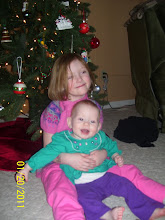- NAEYC. (2009). Developmentally appropriate practice in early childhood programs serving children from birth through age 8. Retrieved May 26, 2010, from http://www.naeyc.org/files/naeyc/file/positions/dap
- NAEYC. (2009). Where we stand on child abuse prevention. Retrieved May 26, 2010, from http://www.naeyc.org/files/naeyc/file/positions/ChildAbuseStand.pdf
- NAEYC. (2009). Where we stand on school readiness. Retrieved May 26, 2010, from http://www.naeyc.org/files/naeyc/file/positions/Readiness.pdf
- NAEYC. (2009). Where we stand on responding to linguistic and cultural diversity. Retrieved May 26, 2010, from http://www.naeyc.org/files/naeyc/file/positions/diversity.pdf
- NAEYC. (2003). Early childhood curriculum, assessment, and program evaluation: Building an effective, accountable system in programs for children birth through age 8. Retrieved May 26, 2010, from http://www.naeyc.org/files/naeyc/file/positions/pscape.pdf
- NAEYC. (2009, April). Early childhood inclusion: A summary. Retrieved May 26, 2010, from http://www.naeyc.org/files/naeyc/file/positions/DEC_NAEYC_ECSummary_A.pdf
- Zero to Three: National Center for Infants, Toddlers, and Families. (2010). Infant-toddler policy agenda. Retrieved May 26, 2010, from http://www.zerotothree.org/site/PageServer?pagename=ter_pub_infanttodller
- FPG Child Development Institute. (2006, September). Evidence-based practice empowers early childhood professionals and families. (FPG Snapshot, No. 33). Retrieved May 26, 2010, from http://www.fpg.unc.edu/~snapshots/snap33.pdf
Note: The following article can be found in the Walden University Library databases. - Turnbull, A., Zuna, N., Hong, J. Y., Hu, X., Kyzar, K., Obremski, S., et al. (2010). Knowledge-to-action guides. Teaching Exceptional Children, 42(3), 42–53.
Use the Academic Search Complete database, and search using the article's title.
Part 2: Global Support for Children’s Rights and Well-Being
- Article: UNICEF (n.d.). Fact sheet: A summary of the rights under the Convention on the Rights of the Child. Retrieved May 26, 2010, from http://www.unicef.org/crc/files/Rights_overview.pdf
- Websites:
- World Forum Foundation http://www.worldforumfoundation.org/wf/about.php
This link connects you to the mission statement of this organization. Make sure to watch the video on this webpage - World Organization for Early Childhood Education http://www.omep-usnc.org/
Read about OMEP’s mission. - Association for Childhood Education Internationalhttp://acei.org/about/
Click on “Mission/Vision” and “Guiding Principles and Beliefs” and read these statements.
Note: Explore the resources in Parts 3 and 4 in preparation for this week’s Application assignment.
Part 3: Selected Early Childhood Organizations
- National Association for the Education of Young Childrenhttp://www.naeyc.org/
- The Division for Early Childhoodhttp://www.dec-sped.org/
- Zero to Three: National Center for Infants, Toddlers, and Familieshttp://www.zerotothree.org/
- WESTEDhttp://www.wested.org/cs/we/print/docs/we/home.htm
- Harvard Education Letterhttp://www.hepg.org/hel/topic/85
- FPG Child Development Institutehttp://www.fpg.unc.edu/main/about.cfm
- Administration for Children and Families Headstart’s National Research Conferencehttp://www.acf.hhs.gov/programs/opre/hsrc/
- HighScope http://www.highscope.org/
- Children’s Defense Fund http://www.childrensdefense.org/
- Center for Child Care Workforce http://www.ccw.org/
- Council for Exceptional Children http://www.cec.sped.org//AM/Template.cfm?Section=Home
- Institute for Women’s Policy Research http://www.iwpr.org/index.cfm
- National Center for Research on Early Childhood Education http://www.ncrece.org/wordpress/
- National Child Care Association http://www.nccanet.org/
- National Institute for Early Education Research http://nieer.org/
- Pre[K]Now http://www.preknow.org/
- Voices for America’s Children http://www.voices.org/
- The Erikson Institute http://www.erikson.edu/
Additional Resources:
· Child Trends: School readiness.
· Center for the Developing Child – Harvard University
o Early Childhood Innovation Partnership: Reducing Developmental Barriers to Learning. Retrieved March 30, 2011.
· Birth to Five Policy Alliance
http://www.naeyc.org/files/naeyc/file/policy/toolkit.pdf
Advocacy tools Chapter1 (pages 3,4) Chapter 3 (pgs. 15,16)
http://sylvan.live.ecollege.com/ec/courses/56611/CRS-CW-4894979/educ6005_readings/naeyc_codeofethicspdf.pdf
NAEYC code of ethics.









